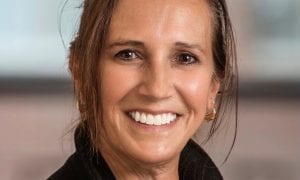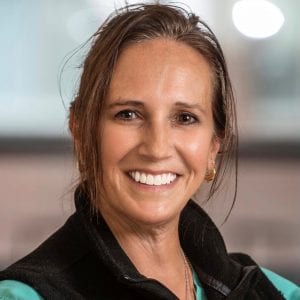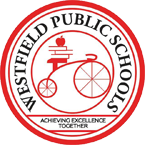WESTFIELD – In the last two weeks of school, parents and students were asked to fill out a survey to rate the remote learning implemented by Westfield Public School during the COVID-19 school closure.
Superintendent Stefan Czaporowski said they had a big response, with 1,233 surveys returned from parents and families, and 2,674 responses from students of all ages, which he said is 50 percent of the student population.
“It’s good information for us to have. I really am appreciative of all the students and parents who took the time, so we can have the information to plan for next year,” Czaporowski said.
Respondents were asked to rate their answers on a 1-4 scale, with 3 and 4 being satisfied or very satisfied, respectively, and 1 and 2 being very dissatisfied or dissatisfied.
The highest rated question to parents asked how satisfied they were with the support they and their child received from teachers. 80.7 percent said they were satisfied or very satisfied (41.2% choosing number 4, very satisfied). 19.3 percent answered dissatisfied or very dissatisfied (4.2 percent).
Parents were also asked how satisfied they were with the assignments, activities and meetings. 66.1 percent said they were satisfied or very satisfied, while 33.9 percent were dissatisfied or very dissatisfied.
Asked overall how satisfied parents were with their child’s remote learning experience, 53.4 percent were satisfied or very satisfied, and 46.6 percent were dissatisfied or very dissatisfied.
“That could be for a lot of different factors. They felt supported, but they just didn’t like the experience,” Czaporowski said.
When asked which educational setting parents supported for the fall, 53.2 percent favor returning to school full time, 35.3 percent prefer a hybrid model with some remote learning, and 11.5 percent prefer exclusively remote learning.
Students were asked similar questions, but instead of asking if they were satisfied or dissatisfied, students were asked if they were happy or unhappy with the remote learning experience. Czaporowski said the change in language was due to the questions being directed to all grade levels.
Asked how happy they were with their assignments during remote learning, 62.8 percent of the students said they were happy or very happy, and 37.2 percent said they were unhappy or very unhappy (9.8 percent).
Students were also asked how happy they were with the activities and projects they were given, which earned a slightly higher rating for the hands-on work. 64.2 percent of students said they were happy or very happy, and 35.8 percent said unhappy or very unhappy (8 percent).
Students were also asked to agree or disagree with the statement, “I have enjoyed remote learning.” 40.1 percent of students agreed or strongly agreed, while 59.9 percent disagreed or strongly disagreed.
“In terms of the kids, they missed their interaction with their peers and their teachers,” Czaporowski said.
When asked if given a choice, which type of learning would they want in the fall, 50.6 percent favored a return to school full-time, 37.1 percent said they would prefer a hybrid model, and 12.3 percent said they wanted to continue remote learning.
“What’s interesting about that for us, is we now realize there is a segment of parents and students, 12 percent, who do not feel safe returning to school, so we’re going to have to come up with a plan that accommodates that,” Czaporowski said.
Both parents and students were asked what does Westfield Public Schools need to do to improve upon remote learning. Czaporowski said there was no real consensus. Some respondents said nothing, or “I don’t know.” Others said the work needed to be more challenging, or less challenging.
“The reality is there are some families and some students who don’t like the remote learning environment, and a small percentage who do,” Czaporowski said,” adding, “If I have students and parents who don’t feel safe sending their students, we will develop an online only platform for those students.”
Asked whether he was surprised by any of the responses to the survey, Czaporowski said he wasn’t.
“We knew there were concerns with remote learning. I think the numbers are pretty good considering we didn’t have time to really plan; we only had two weeks to plan it,” he said.
The district is studying the data, comments and suggestions from the survey to plan for the fall. “We do have to be prepared, in case we do have to close again. And we know there is a segment that doesn’t feel safe returning to school,” Czaporowski said.
Although no final decisions have been made regarding the return to school, planning committees are actively meeting. “We’re working on it, committees are working on it,” Czaporowski said. He said they have already ordered enough personal protection equipment to get the schools through January.
Czaporowski said one thing they do know already is that with at least three feet between desks, which is the current guidance from Commissioner Jeffrey C. Riley of the Department of Elementary and Secondary Education, “We cannot bring every student back at the same time.”
Czaporowski said right now they are looking at the possibility of an “A” week and a “B” week for students to return, rather than alternate days, which he said may be too problematic for families.
The district is also still waiting for guidance from DESE on transportation, physical education, band and chorus, all activities with a higher risk of spreading the virus.
“Particularly with transportation, if we’re only able to put half the students on a bus that we normally would, we don’t have the budget to double our capacity,” Czaporowski said.
“Additional guidance will be coming out hopefully in the next week or so,” he added.
“If things get better, there’s still the possibility that we may be able to bring all the students back,” Czaporowski said, stressing, “We haven’t decided anything final.”








